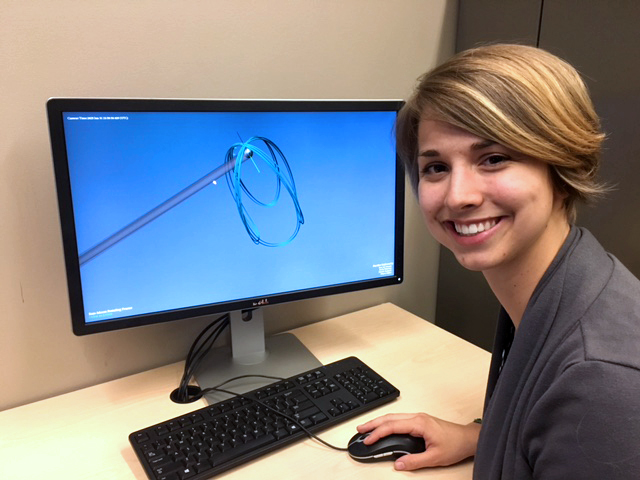Emily Spreen
Purdue University
Similar to explorers that traveled far from their homelands to reach out and understand the new world, countless robotic probes have been sent by humans into deep space on exploration and science missions. However, expanding beyond low-Earth orbit (LEO) to embrace a more far-reaching permanent presence–a shift beyond exploration missions–is a near-term goal. An increasingly permanent human presence in the regions beyond LEO, similar to the first colonists that strived to build lasting communities in the new world, necessitates the strategic development of supporting infrastructure and an implementation strategy. A dynamical understanding of orbits in the Earth-Moon neighborhood that can sustain long-term activities and trajectories that link locations of interest forms a critical foundation for the creation of infrastructure to support a lasting human presence. The Deep Space Gateway (DSG), a future long-term habitat or hub in an orbit near the Moon, is expected to serve as a staging location for activities and missions within cislunar space. Expanding from this hub near the Moon, NASA’s goals for the Deep Space Transport (DST) aim to allow for the transportation of humans between locations in cislunar and translunar space within the next decade.
To enable the expansion of a human presence beyond low-Earth orbit and into deep space, understanding the complex multibody dynamical regime in cislunar space within the context of trajectory planning and targeting is critical. The proposed research effort aims to develop a methodology to move through cislunar space between destinations of interest while implementing innovative strategies to incorporate realistic mission constraints. The development of this trajectory design approach will allow for an understanding of fundamental motion in cislunar space that applies across many missions (including DSG/DST operations) enabling a more informed design approach, rather than focusing on a point solution for each mission. The proposed research plan also aims to deliver trajectory targeting approaches within a framework that is applicable to various missions and that can incorporate a number of types of mission constraints. These targeting approaches will allow for the implementation of advanced trajectory concepts and enable adaptability in complex designs. A simultaneous approach for designing the path, understanding targeting options, and incorporating constraints allows for a streamlined mission design flow from concept to implementation.
NASA is in need of tools to model mission objectives and goals, compare mission paths, and determine the value of a mission concept. In direct response to this objective, the proposed research allows for many viable trajectory options to be explored and compared during the pre-mission path-planning phase, thereby leading to an informed process for selection of the mission baseline. After the baseline plan is developed, NASA will benefit from a capability to rapidly re-plan mission trajectories and alternative approaches as conditions change, problems arise, or new opportunities emerge. The proposed targeting approach will contribute to the accomplishment of these goals and enable trajectory re-planning and computation for both crewed and robotic missions, both onboard and from the ground.
























